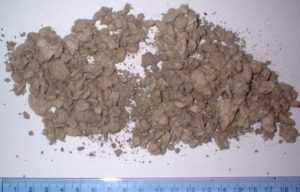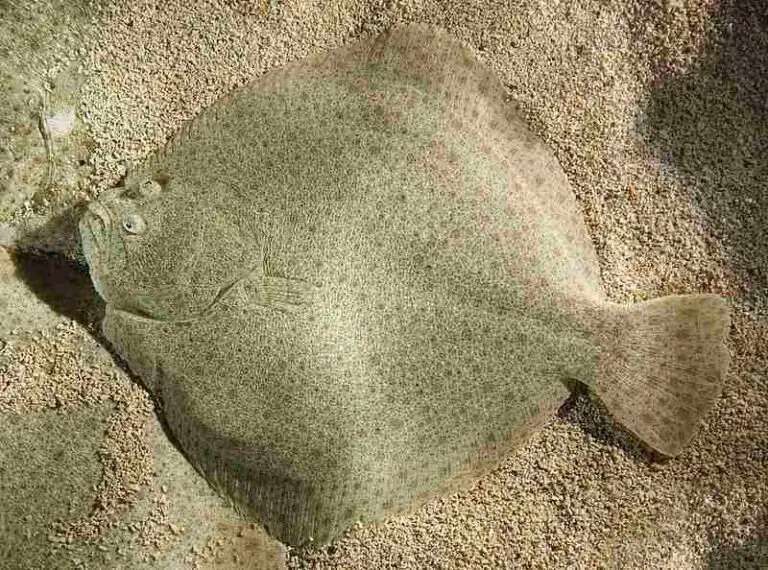Anaerobic Digestion Meaning, History, Stages and Products
Anaerobic digestion (AD) is the breakdown of organic matter through a series of biochemical and biological reactions, and in the absence of oxygen, to yield end-products like methane. This article discusses anaerobic digestion meaning, history, stages and products, as outlined below;
-Anaerobic Digestion Meaning: 10 Definitions of Anaerobic Digestion
-History of Anaerobic Digestion
-Stages of Anaerobic Digestion
Anaerobic Digestion Meaning: 10 Definitions of Anaerobic Digestion
Anaerobic digestion is a term used to describe the series of interrelated biological processes by which organic matter is broken down or converted, in the absence of oxygen.
With regards to the term ‘biological’, it is important to acknowledge the link between anaerobic digestion and organic activities. This is expressed in the alternative definition below;
Anaerobic digestion is a process by which organic matter is broken down by microorganisms such as bacteria and fungi, in the absence of air, to yield converted end-products [9].
It can be observed from the definitions so far, that anaerobic digestion occurs in the absence of oxygen [7]. This fact is already implied by the word ‘anaerobic’ which is used to describe the concept.
Aside the organic factors of anaerobic digestion, there are some reasons for which this process is often utilized. These reasons can also be considered when defining the concept;
Anaerobic digestion is the breakdown, transformation or conversion of biodegradable matter in the absence of oxygen, in order to effectively manage waste, or generate bioenergy.
The words ‘biodegradable’ and ‘bioenergy’ in the definition above, imply that anaerobic digestion is related to other biotechnological concepts. This is also implied in the definition below;
Anaerobic digestion is a method of biodegradation, whereby biochemical processes are used to transform organic matter under oxygen-deficient conditions, as a means of bioremediation or biomass conversion.
‘Biochemical processes’ are a significant aspect of anaerobic digestion, as the above definition suggests. It is important to mention a few of such relevant processes within the context if anaerobic digestion;
Anaerobic digestion is the conversion of organic matter through various anaerobic, biochemical processes like methanization, fermentation and hydrolysis [3], to yield end-products.
The definition above makes mention of ‘end-products’. This means that the end-products of anaerobic digestion are important and can be used to describe the concept.
In the same vein, the raw materials or substrates which are converted to yield these end-products, can be considered when defining anaerobic digestion;
Anaerobic digestion is a process in which organic substrates like sewage, food waste, wastewater, and plant biomass, are converted in the absence of oxygen, to yield end-products like methane (biogas), digestate, biofertilizer, carbon dioxide, and water.
The main products of anaerobic digestion are methane, digestate, carbon dioxide and water.
Methane produced from biological processes is also referred to as biogas, and is used as a source of bioenergy, whereas digestate is the residue from anaerobic digestion.
It occurs as nutrient-rich biomass, which may be segregated into solid and liquid portions, and can be used as a fertilizer [10].
Carbon dioxide, a greenhouse gas, is one of the gaseous products of the process.
The production of methane and carbon dioxide raises inquiries about the potential role of anaerobic digestion in climate change and global warming. However, studies suggest that anaerobic digestion is a means of reducing greenhouse emissions in the energy production sector [1].
These inquiries are important because anaerobic digestion is considered a possible solution to problems of waste management, renewable energy production, and environmental remediation.
It is clear from the foregoing, that anaerobic digestion is viewed by some as one of the methods developed to support the sustainable development agenda of environmental, economic and social sustainability, through pollution-control and renewable energy.
These factors can be considered when defining the concept;
Anaerobic digestion is a biotechnological method which involves the decomposition of organic matter in the absence of oxygen, to produce clean, renewable energy for electricity generation, among other uses, as part of efforts to achieve sustainable development.
In all definitions so far, the phrase “in the absence of oxygen”, or any of its variants, has been included. This implies that anaerobic digestion is best carried out under effectively controlled conditions.
The following definition highlights this implication;
Anaerobic digestion is the conversion or breakdown of biomass, under controlled conditions of temperature, aeration, chemical equilibrium and pressure, to yield end-products that have little or no negative impact on the environment.
End-products of anaerobic digestion are expected to be less-toxic than the substrates, and therefore to have less-negative potential impact on the environment. This perspective is conveyed in the definition below;
Anaerobic digestion is an environment-friendly process, geared toward transforming organic matter into less-toxic materials, through anaerobic biochemical reactions.
Lastly, anaerobic digestion can be defined based on its role in soil treatment;
Anaerobic digestion is a biotechnological method used in environmental remediation, to remove biodegradable pollutants in soil, through anaerobic biodegradation, thereby producing biogas, and nutrient-rich digestate, that can be used as fertilizer for soil amendment.
History of Anaerobic Digestion
The practice of anaerobic digestion by humans, under controlled conditions, dates back to Ancient China, about 3000 years ago [22].
Here, anaerobic digestion was used to treat animal manure.
In the year 1630, of the early 17th century, the Belgian chemist Jan Baptista Van Helmont, observed the production of flammable gaseous emissions from organic matter while undergoing biodegradation [5].
The 18th century saw further studies by Italian chemist Alessandro Volta, who studied the natural occurrence of anaerobic digestion, noting in the year 1776, that methane gas was produced as a result of the process [6].
This methane was the same ‘flammable gas’ observed earlier by Van Helmont, and the subsequent studies showed that the amount of methane produced was directly proportional to the volume of organic matter which is undergoing anaerobic digestion.
Volta’s studies gave more clarity to the subject, by defining the chemical identity of the major gaseous end-product of anaerobic digestion.
These studies also indicated that anaerobic digestion was possible under a specific range of physicochemical conditions.
English chemist Sir Humphry Davy provided further proof of the production of methane as a result of anaerobic digestion, from his studies in 1808 [11].
These separate efforts formed the foundation on which the modern practical use of anaerobic digestion was built.
In Bombay, India; the first known modern anaerobic digestion plant, was built in the year 1859 [15].
Some decades later, in 1895, anaerobic digestion was used for sewage treatment in Exeter, England [23].
The process produced biogas which was used to light a methane-based lamp.
Interest in anaerobic digestion as a method of waste management, bioenergy production and electricity generation, grew within this period.
The year 1904 saw the establishment of yet another anaerobic digestion facility in Hampton, London; which was used for sludge treatment and sedimentation.
German engineer Karl Imhoff introduced the Imhoff tank in 1906 [13], which was a pioneer model of the anaerobic digestion reactor.
The Imhoff tank was soon replaced by improved reactor designs that enabled anaerobic digestion to be controlled in a more effective manner.
In the 1930s, advancements in the field of microbiology enabled scientists to research extensively on anaerobic digestion.
Their studies helped to establish the knowledge that anaerobic digestion is a form of biodegradation, driven mostly by microorganisms. They were also able to identify some anaerobic microbes like methagens and acetogens.
With the intensification of the industrial era, anaerobic digestion declined in popularity.
This was especially due to the discovery of petroleum, and the design of the combustion engine which relies on fossil fuels.
Interest in anaerobic digestion technology was renewed briefly on separate occasions, such as in World War II, and during the fuel shortages of the late 20th century.
Although significant progress in terms of technical efficiency is yet to be made, the commercial and industrial practice of anaerobic digestion has increased notably in the 21st century.
Stages of Anaerobic Digestion
The four stages of anaerobic digestion are hydrolysis, acidogenesis, acetogenesis, and methanogenesis [11]. Hydrolysis and acidogenesis involve the preliminary breakdown of polymeric organic matter, while acetogenesis and methanogenesis involve the transformation of organic matter into simpler end-products.
Aside the main end-products of anaerobic digestion, other materials are produced in the process, such as ammonia and hydrogen sulfide.
It is important to note that effective anaerobic digestion must be conducted under controlled physicochemical and biological conditions, in the absence of oxygen. However, it can also occur naturally [19].
Anaerobic digestion takes place naturally in oxygen-deficient environments such as oceans, subsurface soil, swamps and lakes.
When it is conducted by humans, anaerobic digestion takes place in a reactor [2].
Also called a ‘digester’, the reactor is a sealed vessel which is designed to facilitate the anaerobic breakdown of organic matter under well-controlled conditions. It is therefore correct to describe the reactor as a type of manmade enclosure, for a closed biochemical system.
Reactor vessels come in different shapes and sizes [17], as well as internal configurations, depending on the scale of anaerobic digestion, and the type of organic matter (feedstock) to be digested.

Before introducing organic matter into the reactor, measures must be taken to remove non-biodegradable materials, inorganic contaminants and other unwanted components.
The organic matter may also be sorted based on physicochemical characteristics, to ensure that the anaerobic digestion process is effective.
The four stages of the anaerobic digestion process are discussed below;
1). Hydrolysis (Stage 1)
Hydrolysis is the first stage in the process of anaerobic digestion, and it involves the breakdown of complex organic compounds like lipids, proteins and carbohydrates, to produce simpler compounds like fatty acids, amino acids and sugars [19].
This stage is necessary because organic matter often occurs as long-chain, high molecular-weight polymers. When they undergo hydrolysis, these polymers become simpler compounds like monomers and oligomers.
During hydrolysis, the substrate is degraded to produce simpler compounds that can undergo acetogenesis.
It is important to note that this process is driven by microorganisms like anaerobic bacteria and fungi, which derive bioenergy from the organic matter, while secreting microbial enzymes to facilitate the breakdown.
Basically, hydrolysis is a reaction with water [8], which results in the splitting of the water molecule to produce hydrogen (H+) and hydroxyl (OH-).
For organic matter, in anaerobic digestion, hydrolysis can be illustrated as shown below;
Organic Polymers + H2O → Monomers/Oligomers + H2 —(1)
Where examples of the organic polymers (reactants) include fats, cellulose, proteins, starch; and examples of the monomers and oligomers (products) include fatty acids, glucose, and amino acids.
2). Acidogenesis (Stage 2)
Acidogenesis is the breakdown of monomers and oligomers like glucose and amino acids, to produce simpler organic compounds like acetones, alcohols and volatile acids [18].
During acidogenesis, fermentation occurs, producing ethanol, carbon dioxide, volatile fatty acids, hydrogen sulfide, and ammonia, among others [4].
One of the reasons this stage of anaerobic digestion is important, is because of the production of ethanol, which can be used as a fuel for bioenergy production and electricity generation [12].
The reactions below show acidogenesis of glucose to produce acetone and ethanol, successively;
C6H12O6 + 2H2 → 2CH3CH2COOH + 2H2O —(2)
C6H12O6 → 2CH3CH2OH + 2CO2 —(3)
Acidogenesis prepares the organic substrate for conversion, by breaking down the substrate into small compounds.
3). Acetogenesis (Stage 3)
Acetogenesis is the conversion of volatile fatty acids (VFAs) and alcohols, into inorganic and organic products like carbon dioxide, acetic acid and hydrogen.
The word ‘conversion’ used in the definition above, implies that acetogenesis is the first stage of actual conversion/transformation of organic matter, in anaerobic digestion.
Acetic acid is a major product of this stage, hence the term ‘acetogenesis’- the creation of acetic acid.
Microorganisms which are active at this stage are mainly acetgogens or acid-forming bacteria, like Clostridium aceticum, Clostridium carboxidivorans, and Syntrophomonas wolfei [14].
Acetogenesis can be summarized using the following biochemical reactions, which show the conversion of fatty acids and ethanol;
CH3CH2COO- + 3H2O → CH3COO- + H+ + HCO3- + 3H2 —(4)
C6H12O6 + 2H2O → 2CH3COOH + 2CO2 + 4H2 —(5)
CH3CH2OH + 2H2O → CH3COO- + 2H2 + H+ —(6)
2HCO3- + 4H2 + H+ → CH3COO- + 4H2O —(7)
4). Methanogenesis (Stage 4)
Methanogenesis is the fourth and final stage of anaerobic digestion, in which hydrogen and acetic acid are converted to water, carbon dioxide and methane [21].
As the term ‘methanogenesis’ implies, methane or biogas is a major product of this stage. Other products include ammonia, hydrogen sulfide, bicarbonate and carbon dioxide.
The production of carbon dioxide in acidogenesis, acetogenesis, and methanogenesis, also implies that a significant amount of greenhouse gases is produced during the overall process of anaerobic digestion.
Bacteria which contribute to methanogenesis are called methanogens, and include Methanococcus jannaschii, Methanobacterium bryantii, Methanobrevibacter gottschalkii, Methanogenium frigidum, Methanobacterium thermo-autotrophicum and Methanobrevibacter smithii [20].
The following reactions illustrate the conversion of acetic acid, alcohols and hydrogen to methane and carbon dioxide, in the methanogenesis stage of anaerobic digestion;
2CH3CH2OH + CO2 → 2CH3COOH + CH4 —(8)
CH3COOH → CH4 + CO2 —(9)
CH3OH → CH4 + H2O —(10)
CO2 + 4H2 → CH4 + 2H2O —(11)
CH3COO- + SO42- + H+ → 2HCO3 + H2S —(12)
CH3COO- + NO- + H2O + H+ → 2HCO3 + NH4+ —(13)
Digestate is the term used to describe the residue from the final stage of anaerobic digestion. It is a nutrient-rich substance composed of dead microbes and undigested material.
Digestate can be used as agricultural fertilizer and may be up to 95% of the original weight of the original organic feedstock which was made to undergo anaerobic digestion.

What does Anaerobic Digestion Produce? A Summary of Raw Materials and Products of Anaerobic Digestion
The raw material in anaerobic digestion is organic matter [16].
This may occur in the form of wastewater, sewage, animal manure, grass and maize stalks, waste paper, and food waste.
Organic matter is composed of complex polymeric compounds like lipids, proteins and carbohydrates.
These complex polymers are broken down successively through the four stages of anaerobic digestion, to yield simpler end-products.
Anaerobic digestion produces inorganic materials like carbon dioxide, methane, hydrogen sulfide, water and ammonia.
The following table summarizes the raw materials and products of anaerobic digestion, in terms of the individual stages;
| Stage | Raw Material(s)/Substrate | Products(s) |
| Stage 1 (Hydrolysis) | Wastewater, sewage, grass, plant remains, animal manure, food waste | Fatty acids, amino acids, monomeric sugars |
| Stage 2 (Acidogenesis) | Fatty acids, amino acids, monomeric sugars | Acetones, alcohols, volatile acids |
| Stage 3 (Acetogenesis) | Acetones, alcohols, volatile acids | Carbon dioxide, acetic acid, hydrogen, bicarbonate |
| Stage 4 (Methanogenesis) | Carbon dioxide, acetic acid, hydrogen, bicarbonate | Methane, digestate, hydrogen sulfide, carbon dioxide, ammonia |
Conclusion
Anaerobic digestion is a biotechnological process whereby organic matter is broken down and converted by microorganisms in the absence of oxygen, to yield inorganic end-products like methane, carbon dioxide and water.
Although anaerobic digestion can occur naturally, it is often used as a method of waste management, environmental remediation, and bioenergy generation, through biomass conversion
The four stages of anaerobic digestion are;
- Hydrolysis
- Acidogenesis
- Acetogenesis
- Methanogenesis
Raw materials which undergo anaerobic digestion include carbohydrates, lipids, and proteins, while the final products of the process include methane, carbon dioxide, water, ammonia, and hydrogen sulfide.
References
1). Abbasi, T.; Tauseef, S. M.; Abbasi, S. A. (2012). “Anaerobic digestion for global warming control and energy generation-An overview.” Renewable and Sustainable Energy Reviews 16(5). Available at: https://doi.org/10.1016/j.rser.2012.02.046. (Accessed 21 April 2022).
2). Abdelgadir, A.; Chen, X.; Liu, J.; Xie, X.; Zhang, J.; Zhang, K.; Wang, H.; Liu, N. (2014). “Characteristics, Process Parameters, and Inner Components of Anaerobic Bioreactors”, BioMed Research International, vol. 2014, Article ID 841573, 10 pages, 2014. Available at: https://doi.org/10.1155/2014/841573. (Accessed 21 April 2022).
3). Anukam. A.; Mohammadi, A.; Naqvi, M.; Granström, K. (2019). “A Review of the Chemistry of Anaerobic Digestion: Methods of Accelerating and Optimizing Process Efficiency.” Processes 7(8):504. Available at: https://doi.org/10.3390/pr7080504. (Accessed 21 April 2022).
4). Castilla-Archilla, J.; Heiberger, J.; Mills, S.; Hilbig, J.; Collins. G.; Lens, P. N. (2021). “Continuous Volatile Fatty Acid Production From Acid Brewery Spent Grain Leachate in Expanded Granular Sludge Bed Reactors.” Front. Sustain. Food Syst., 07 May 2021. Available at: https://doi.org/10.3389/fsufs.2021.664944. (Accessed 21 April 2022).
5). Chasnyk, O.; Solowski, G.; Shkarupa, O. (2015). “Historical, technical and economic aspects of biogas development: Case of Poland and Ukraine.” Renewable and Sustainable Energy Reviews 52:227-239. Available at: https://doi.org/10.1016/j.rser.2015.07.122. (Accessed 23 April 2022).
6). Gijzen, H. J. (2002). “Anaerobic digestion for sustainable development: a natural approach.” Water Science & Technology 45(10):321-328. Available at: https://doi.org/10.2166/wst.2002.0364. (Accessed 23 April 2022).
7). Hanum, F.; Yuan, L. C.; Kamahara, H.; Aziz, H. A.; Atsuta, Y.; Yamada, T.; Daimon, H. (2019). “Treatment of Sewage Sludge Using Anaerobic Digestion in Malaysia: Current State and Challenges.” Front. Energy Res., 05 March 2019. Available at: https://doi.org/10.3389/fenrg.2019.00019. (Accessed 21 April 2022).
8). Helmenstine, A. M. (2019). “Hydrolysis: Definition and Examples.” Available at: https://www.thoughtco.com/definition-of-hydrolysis-605225. (Accessed 21 April 2022).
9). Kang, A. J.; Yuan, Q. (2017). “Enhanced Anaerobic Digestion of Organic Waste”, in F. Mihai (ed.), Solid Waste Management in Rural Areas, IntechOpen, London. Available at: https://doi.org/10.5772/intechopen.70148. (Accessed 21 April 2022).
10). Magrí, A.(2018). “Research Trends on Nutrient Management From Digestates Assessed Using a Bibliometric Approach.” Front. Sustain. Food Syst., 13 July 2018. Available at: https://doi.org/10.3389/fsufs.2018.00040. (Accessed 21 April 2022).
11). Meegoda, J. N.; Li, B. S.; Patel. K.; Vidyavihar, S.; Wang, L. B. (2018). “A Review of the Processes, Parameters, and Optimization of Anaerobic Digestion.” International Journal of Environmental Research and Public Health 15(10):2224. Available at: https://doi.org/10.3390/ijerph15102224. (Accessed 21 April 2022).
12). Melin, K.; Nieminen, H.; Klüh, D.; Laari, A.; Koiranen, T.; Gaderer, M. (2022). “Techno-Economic Evaluation of Novel Hybrid Biomass and Electricity-Based Ethanol Fuel Production.” Front. Energy Res., 18 February 2022. Available at: https://doi.org/10.3389/fenrg.2022.796104. (Accessed 21 April 2022).
13). Mikelonis, A.; Herrera, A.; Adams, E.; Hodge, M. (2010). “Honduran Imhoff Tanks: Potentials and Pitfalls.” Journal of Water Management Modeling. Available at: https://doi.org/10.14796/JWMM.R236-22. (Accessed 23 April 2022).
14). Rückel, A.; Hannemann, J.; Maierhofer, C.; Fuchs, A.; Weuster-Botz, D. (2021). “Studies on Syngas Fermentation With Clostridium carboxidivorans in Stirred-Tank Reactors With Defined Gas Impurities.” Front. Microbiol., 15 April 2021. Available at: https://doi.org/10.3389/fmicb.2021.655390. (Accessed 21 April 2022).
15). Rufai, I. A. (2010). “00 A REVIEW OF THE EVOLUTION AND DEVELOPMENT OF ANAEROBIC DIGESTION TECHNOLOGY.” Biofuel Technology Project. Available at: https://www.researchgate.net/publication/335992164_00_A_REVIEW_OF_THE_EVOLUTION_AND_DEVELOPMENT_OF_ANAEROBIC_DIGESTION_TECHNOLOGY. (Accessed 23 April 2022).
16). Santos, A. (2011). “Anaerobic digestion of organic matter. Biogas production from energy crop residues (Maize stalks).” Available at: https://www.researchgate.net/publication/277125667_Anaerobic_digestion_of_organic_matter_Biogas_production_from_energy_crop_residues_Maize_stalks. (Accessed 21 April 2022).
17). Schirmer, C.; Nussbaumer, T.; Schöb, R.; Pörtner, R.; Eibl, R.; & Eibl, D. (2018). “Development, Engineering and Biological Characterization of Stirred Tank Bioreactors.” In M. Yeh, & Y. Chen (Eds.), Biopharmaceuticals. IntechOpen. Available at: https://doi.org/10.5772/intechopen.79444. (Accessed 21 April 2022).
18). Shen, D.; Yin, J.; Yu, X.; Wang, M.; Long, Y.; Gongshang, Z.; Chen, T. (2017). “Acidogenic fermentation characteristics of different types of protein-rich substrates in food waste to produce volatile fatty acids.” Bioresource Technology 227. Available at: https://doi.org/10.1016/j.biortech.2016.12.048. (Accessed 21 April 2022).
19). Sikora, A.; Detman, A.; Chojnacka, A.; and Błaszczyk, M. (2017). “Anaerobic Digestion: I. A Common Process Ensuring Energy Flow and the Circulation of Matter in Ecosystems. II. A Tool for the Production of Gaseous Biofuels.” In (Ed.), Fermentation Processes. IntechOpen. https://doi.org/10.5772/64645. (Accessed 21 April 2022).
20). Taubner, R.; Schleper. C.; Firneis. M. G.; Rittmann, S. K. R. (2015). “Assessing the Ecophysiology of Methanogens in the Context of Recent Astrobiological and Planetological Studies.” Life 5(4):1652-1686. Available at: https://doi.org/10.3390/life5041652. (Accessed 21 April 2022).
21). Wainaina, S.; Lukitawesa. L.; Awasthi, M.; Taherzadeh, M. J. (2019). “Bioengineering of anaerobic digestion for volatile fatty acids, hydrogen or methane production: A critical review.” Bioengineered. Available at: https://doi.org/10.1080/21655979.2019.1673937. (Accessed 21 April 2022).
22). Wang, J. (2014). “Decentralized biogas technology of anaerobic digestion and farm ecosystem: opportunities and challenges.” Front. Energy Res., 26 March 2014. Available at: https://doi.org/10.3389/fenrg.2014.00010. (Accessed 23 April 2022).
23). Wilkinson, K. (2011). “Development of On-Farm Anaerobic Digestion”, in S. Kumar (ed.), Integrated Waste Management – Volume I, IntechOpen, London. Available at: https://doi.org/10.5772/17243. (Accessed 23 April 2022).



